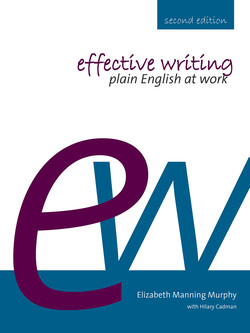Читать книгу Effective Writing - Elizabeth Manning Murphy - Страница 28
Examples
Оглавлениеthe book of the boy
Step 1: boy (possessing noun)
Step 2: boy’
Step 3: boy’s (Add s because boy’ + book alone sounds wrong)
the boy’s book
the tiara of the duchess
Step 1: duchess (possessing noun ending in s sound)
Step 2: duchess’
Step 3: duchess’s
the duchess’s tiara
This is Australian Commonwealth style, as recommended in the Style manual for authors, editors and printers (6th edition, revised by Snooks & Co, published by John Wiley & Sons Australia, Ltd, 2002) usually referred to as Style manual. An older version of this phrase was the duchess’ tiara, but it has largely been superseded by the version illustrated. Similar treatments are the thesis’s title and John Stevens’s model cars. Exceptions that still follow the older style include Biblical names such as Jesus in Jesus’ birthplace.
the house of the Joneses (Joneses is the plural of Jones)
Step 1: Joneses
Step 2: Joneses’
Step 3: Joneses’ (an extra s would sound ridiculous!)
the Joneses’ house
Suppose there are many duchesses and they all have tiaras. Follow the same steps as above, but listen carefully to what it sounds like at Step 2: the duchesses’ tiaras. Do you need another s? No.
Activity 3a
Complete these sentences by completing the possessive form of the noun in italics:
1 The boy coat is on the chair.
2 The princess tiara is set with diamonds.
3 Charles Dickens novels are classics.
4 Most of the students books were destroyed in the fire. (students is plural)
5 The ladies rest room is being redecorated.
6 The Attorney-General office is on the top floor.
7 The women magazine will be on sale tomorrow.
Turn these ‘of’ forms into the form which places the possessing noun (in italics) first:
8 The children of my sisters-in-law are playing happily together.
9 The houses of Jack and Bill are in the same street. (separate ownership)
10 The mother of Martha and Tammy is in the garden. (joint ownership)
Solutions 3a
1 boy’s
2 princess’s
3 Dickens’s
4 students’
5 ladies’
6 Attorney-General’s
7 women’s
8 My sisters-in-law’s children
9 Jack’s and Bill’s houses
10 Martha and Tammy’s mother.
Sometimes the ‘of’ form is preferable. It just sounds odd to say the table’s top or the car’s door. In these instances, usually concerning inanimate objects, we write the top of the table and the door of the car. An alternative is to use the possessing noun as an adjective and omit the idea of possession altogether – the table top and the car door. The apostrophe is also omitted when a plural noun is used as an adjective immediately before the noun in the title of an organisation or institution, so Students’ Union becomes Students Union. The context of what you are writing will tell you which version to use.
Possession in personal pronouns (see also Section 4.2) is different – no apostrophe is used in a possessive personal pronoun. For example: His coat is on its hook. Their books are on the table. That umbrella is yours. English personal pronouns retain a case system from earlier forms of English and from Latin influence, so they change depending on how the pronoun is to be used in a sentence. The personal pronoun I, for instance, is I when it is the subject in a sentence, me when it is the object, my when it is possessive and the thing possessed is stated – mine when it is not stated. For example:
I am the owner of that umbrella. Please give it to me. That is my umbrella. I repeat – it is mine.
Do not confuse possession with contraction (see Section 7.10). If you remember that personal pronouns never contain apostrophes, you should have no difficulty when words sound the same.
